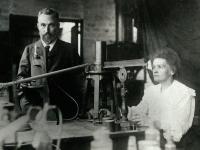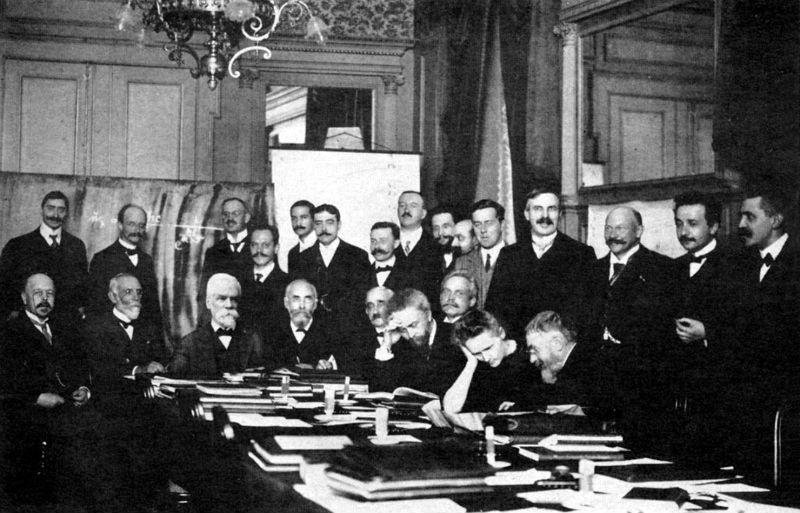What Should I Know About Maria Skłodowska-Curie?
She took her place in history as the first woman who received the Nobel Prize, and as the first person who received such distinction twice. Even today, her life and work are the subject of legends. Here are selected trivia related to the scientific work of one of the most famous scientists in the world, who was awarded the title of doctor honoris causa of the Warsaw University of Technology in 1926.
When Did Her Grand Career Begin?
Even though we associate Maria Skłodowska-Curie with radioactivity research, it doesn’t mean that she had been interested in it since the beginning of her scientific career. Before that, she had been researching magnetic properties of quenched steel. Following that, she had to find a topic for her doctoral thesis. During her research, she stumbled upon the results of Henri Becquerel’s experiments. This French scientist discovered that uranium salts produce a hitherto unknown radiation. Maria, thirty at the time, decided to research this phenomenon as part of her doctoral thesis.
Who Invented the Name “Radioactivity”?
Results obtained by Skłodowska-Curie explicitly indicated that uranium rays are truly extraordinary. It was a great achievement in itself. But the researcher didn’t stop there, and she began to search for similar properties in other elements. She discovered that thorium compounds also spontaneously radiate. This phenomenon had to have a name. The name “radioactivity” was proposed by none other than Skłodowska-Curie herself.
How and with Whom Did She Discover New Elements?
The Polish scientist tested various minerals. It turned out that samples containing thorium or uranium were radioactive. However, the experiments also indicated that the strength of radiation – in addition to uranium and thorium contents – was also influenced by something else. This made her think of something truly revolutionary – the existence of hitherto unknown element. From that time, Skłodowska-Curie continued her research with her husband, Pierre. Together, they attempted to find this new element in pitchblende, one of uranium ores. They used simple chemical analysis to do this. They extracted subsequent components of pitchblende and measured their radioactivity. During this research, it became obvious that they were looking for not one, but two elements. In July 1898, they announced the discovery of polonium, and they discovered radium in December of that year. It should be emphasized that the couple used very simple apparatuses: an ionization chamber (made of tin cans), an electrometer (made by Pierre and his older brother, Jacques), and piezoelectric quartz.
What Did She Do in the Years Following the Discovery?
The discovery was one thing. You also needed to convince the entire scientific community that polonium and radium actually exist. Thus, Maria and Pierre attempted to obtain both these elements in their pure form. To achieve this, they needed very large amounts of uranium ore. They obtained it from the mine in Jáchymov (which was, at the time, the only known source of radium-rich ore). In essence, it was simply waste. The couple bought it – according to Maria herself – for a low price, but using their own (and not the university’s) funds. They conducted their experiments in... an old wooden shack standing in the courtyard of the School of Physics, where Pierre was a lecturer. The peculiarity of this place was further emphasized by the fact that the shack had been formerly a medical school dissecting room.
“There was no way for us to have the necessary devices commonly used by chemists. We only had several old pine tables, stoves to melt minerals, and gas burners”, wrote the scientist. Such were conditions in which Maria and Pierre worked to prove their Nobel-worthy discovery.
It was not only intellectual, but also physical effort. Interestingly, Maria took care of the latter. She was the one who processed as much as 20 kilograms of ore at once, carried heavy dishes, poured their contents, stirred cooking masses. Finally, in 1902, she isolated one decigram of pure radium chloride. In her memoirs, she admitted that if she had proper equipment, the work would have taken a single year, not four.
In 1903, Skłodowska-Curie defended her doctoral thesis.
Why Couldn’t She Receive the Nobel Prize?
Even though Maria and Pierre worked together (they emphasized this in research reports, writing in plural; their daughter Irène also emphasized it), only his candidature was submitted before the Nobel Committee for discovering radioactivity. However, he wrote a letter wherein he wished to “be taken into consideration together with Mrs Curie, with respect to our joint research on radioactive bodies”. The wish was granted and, in 1903, Maria, Pierre and Henri Becquerel received the Nobel Prize in physics.
How Did She React to Winning the Nobel Prize?
On 11 December 1903, she wrote the following in her letter to her brother Józef:
“We won half of the Nobel Prize, I don’t know exactly how much this will be; several dozen thousand francs, I believe (70,000 or something like this?). It’s a large amount of money for us. I don’t know when we will receive the money, maybe only after our trip to Stockholm. [...]
We are being flooded by letters and visits from journalists and photographers. One would rather hide underground to have some peace. We received a proposition from America to go there and do a series of lectures about our works; they have been asking how much do we want for this. We intend to refuse, no matter the conditions. With much effort, we managed to avoid dinners organized for us – but we refuse desperately, and people see that there is no chance”.
For What Was She Awarded the Second Nobel Prize?
Skłodowska-Curie continued her research even after her husband’s tragic death (1906). In 1910, it resulted in obtaining radium not as a chloride, but simply metal. A year later, for the isolation of pure radium and obtaining it in the crystal form, Maria was awarded the second Nobel Prize, this time in chemistry.
Agnieszka Kapela
Office for Promotion and Information
Based on:
Ewa Curie, Maria Curie. Biografia [Maria Curie. Biography], transl. Hanna Szyllerowa, Oficyna Wydawnicza RYTM, Warsaw 2013.
Marek Krawczyk, Historia jednego wykładu, czyli Maria Skłodowska-Curie w 100-lecie przyznania Nagrody Nobla z chemii [History of One Lecture – Maria Skłodowska-Curie in the 100th Anniversary of Awarding the Nobel Prize in Chemistry], Warszawski Uniwersytet Medyczny. Oficyna Wydawnicza, Warsaw 2013.
Laurent Lemire, Maria Słodowska-Curie, transl. Grażyna i Jacek Schirmerowie, Świat Książki, Warsaw 2003.
Maria Skłodowska-Curie, Autobiografia i wspomnienia o Piotrze Curie [Autobiography and Memories of Pierre Curie], Dom Wydawniczo-Promocyjny GAL, Warsaw 2004.
Andrzej Umler, Doktorzy honoris causa Politechniki Warszawskiej [Doctors Honoris Causa of the Warsaw University of Technology], Oficyna Wydawnicza Politechniki Warszawskiej, Warsaw 2015.
Korespondencja polska Marii Skłodowskiej-Curie 1881–1934 [Polish Correspondence of Maria Skłodowska-Curie 1881-1934], compiled by Krystyna Kabzińska, Małgorzata M. Malewicz, Jan Piskurewicz, Jerzy Róziewicz, Instytut Historii Nauki PAN, Polskie Towarzystwo Chemiczne, Warsaw 1994.









